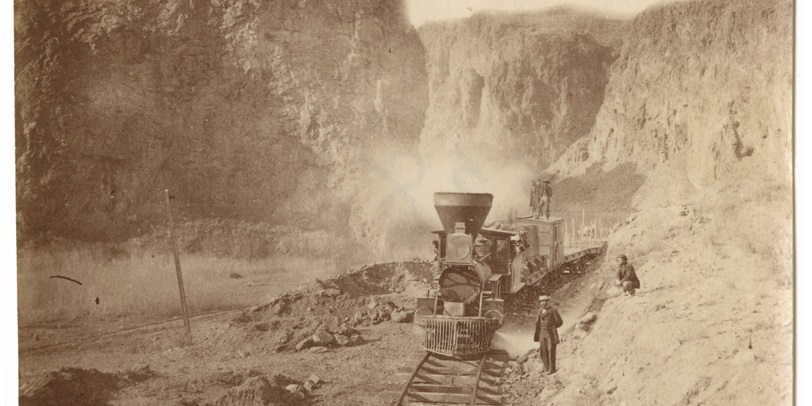At 11 a.m. on Washington’s Birthday, February 22, 1856, the Sacramento Valley Railroad inaugurates service to Folsom, as the locomotive “Sacramento” with a string of passenger and flat cars in tow leaves “Old” Sacramento’s Front Street and heads up the tracks of R Street. It is soon followed by the “Nevada,” which breaks down before covering the full 22.9 miles to Folsom.
But the politicians and local citizenry from both locomotives eventually arrive at Folsom’s Meredith Hotel where they enjoy a “Railroad Ball” that lasts until the next morning. While the Sacramento Valley Railroad incorporates on August 4, 1852, making it the first railroad west of the Mississippi, the Arcata and Mad River Railroad becomes operational sooner, on December 15, 1854. The business plan calls for the Sacramento Valley Railroad to run through Folsom up to Marysville but construction costs are 50 percent more than anticipated so the line terminates at Folsom.

The railroad’s chief engineer is Theodore Judah, a railroad engineer from New York, who later holds the same job with the Central Pacific Railroad and is one of the early advocates of running track up and through the Sierra Nevada to create a transcontinental railroad. Judah doesn’t live to see it happen, dying of yellow fever in November 1863, which he contracts in Panama returning to New York from California.
Judah is hired by Charles Lincoln Wilson, who founds the Sacramento Valley Railroad using profits from a toll road he’s built and a schooner that take passengers and freight up the Sacramento River to the Sierra foothills and the mines. Wilson successfully lobbies state lawmakers to amend the Railroad Act of 1853 to ease his difficulties in securing financing for his venture. A strong money manager is also needed and William Tecumseh Sherman, head of the San Francisco office of banking firm Lucas & Turner, becomes the railroad’s vice president. Having the future Union Army general on board still isn’t enough to lure sufficient investment to take the line north to Marysville.
Judah leaves and forms the Central Pacific Railroad. Folsom becomes the hub for freight heading into the gold fields, sharply reducing Sacramento’s civic revenue. In response, Sacramento levies a tax on all passengers and freight that cross the levee, including by train. To avoid the tax, the Sacramento Valley Railroad creates a new route to a place called Newport, just south of Sacramento, renaming it Freeport. In retaliation, Sacramento tears up the railroad’s original tracks on Front Street.
The Big Four and the Central Pacific take control on August 1, 1865, when Sacramento Valley Railroad President George Bragg, after buying out three other directors, sells his holdings to the rival railroad. Charges of corruption are made by the press. Central Pacific President Leland Stanford and his fellow Sacramento business partners, promptly order all passenger traffic to and from Freeport suspended.
TOP PHOTO: Shows train pulling flatcars; men standing on and next to train (possibly James Strowbridge on right). [State Library Image Stereo-5998]

